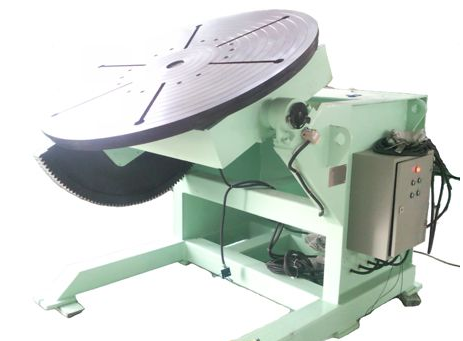While both welding fixtures and welding positioners are commonly used in the welding industry, they serve different purposes and offer distinct functionalities. Here's a breakdown of the key differences between welding fixtures and welding positioners:
Function and Purpose:
Welding Fixture: A welding fixture is a device or tool used to securely hold and position the workpiece during welding. It is designed to provide stability, support, and accurate alignment of the workpiece throughout the welding process. Fixtures are typically custom-made for specific welding projects and workpieces, ensuring precise positioning and minimizing movement or distortion during welding.
The primary function of a welding fixture is to maintain the workpiece in the desired position and orientation, allowing the welder to focus on the welding technique and parameters. Fixtures can be stationary or adjustable, depending on the requirements of the welding project.
Welding Positioner: A welding positioner, on the other hand, is a mechanical device used to manipulate and position the workpiece during welding. It allows for controlled rotation, tilting, and repositioning of the workpiece, offering greater flexibility and accessibility for the welder.
The main purpose of a welding positioner is to provide optimal positioning of the workpiece to facilitate better weld joint access, improved welding technique, and enhanced overall welding efficiency. Positioners are particularly useful when dealing with larger or heavier workpieces that would be difficult or impractical to manipulate manually.

Welding Positioner
Workpiece Handling:
Welding Fixture: A welding fixture primarily focuses on securely holding the workpiece in place. It provides clamps, supports, or other mechanisms to ensure that the workpiece remains stable and accurately aligned during the welding process. The fixture is typically custom-built to match the specific dimensions and geometry of the workpiece, ensuring a precise fit.
Fixtures are particularly useful for repetitive welding tasks, batch production, or when working with complex workpiece shapes that require specialized support to maintain alignment. They provide a consistent and repeatable setup, reducing the need for manual adjustments or repositioning.
Welding Positioner: A welding positioner, on the other hand, is designed to manipulate the workpiece, offering rotational or tilting movement. Positioners are typically equipped with motorized or manual controls that allow for precise adjustment of the workpiece position.
The main advantage of a welding positioner is its ability to provide controlled and automated movement of the workpiece, allowing the welder to access different sides or angles of the weld joint without the need for manual repositioning. Positioners are particularly beneficial when working with large or heavy workpieces, as they alleviate the physical strain on the welder and improve overall welding efficiency.
Flexibility and Versatility:
Welding Fixture: Welding fixtures are often custom-built for specific welding projects and workpieces. They are tailored to match the exact dimensions, geometry, and requirements of the workpiece, ensuring optimal fit and stability. This level of customization provides excellent precision and repeatability for the specific task at hand.
However, due to their custom nature, welding fixtures may be less versatile and adaptable to different workpieces or welding projects. Once a fixture is built for a specific purpose, it may not be easily modified or used for different applications.
Welding Positioner: Welding positioners offer greater flexibility and adaptability compared to welding fixtures. They can accommodate a wide range of workpiece sizes, shapes, and weights. Positioners provide adjustable features such as rotational speed, tilt angle, and height adjustments, allowing for precise positioning and alignment of the workpiece.
This versatility makes welding positioners suitable for a variety of welding applications and projects. They can be used with different workpieces, enabling welders to tackle various welding tasks efficiently and adapt to changing requirements.
In summary, welding fixtures and welding positioners serve different functions in the welding process. Fixtures focus on securely holding and aligning the workpiece, while positioners provide controlled movement and positioning of the workpiece. Fixtures offer excellent precision and repeatability for specific tasks, while positioners provide greater flexibility and adaptability to different workpieces and projects. Understanding the differences between these two tools is essential for selecting the most appropriate solution for a particular welding application.
For the reason of eccentric distance and gravity-center-distance, the slightly higher model should be selected for longer work pieces of which gravity-center has a greater offset. If a standard welding positioner can not meet the requirements for all work-pieces, be sure to offer us the shape, weight, and machining technology of the work-piece, so we can furnish a suitable proposal for your choice.
For more information, please contact us. We will provide professional answers.








